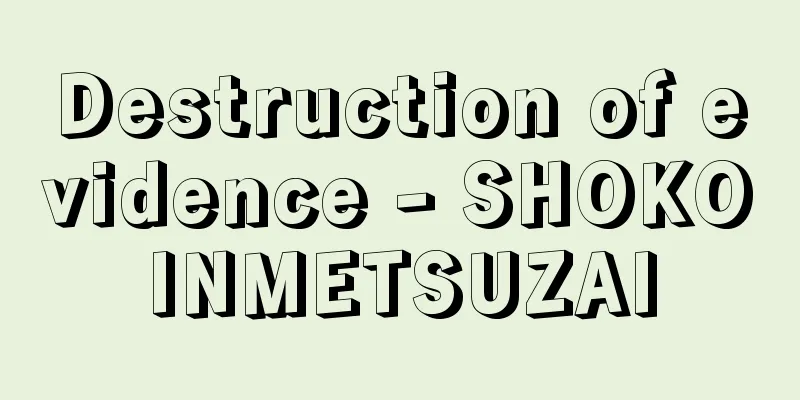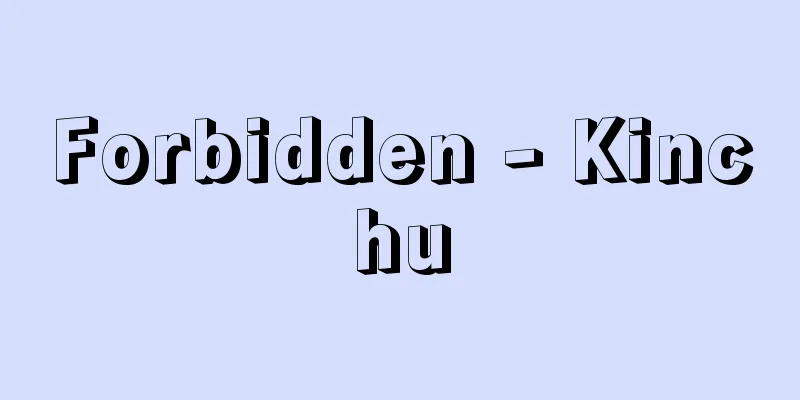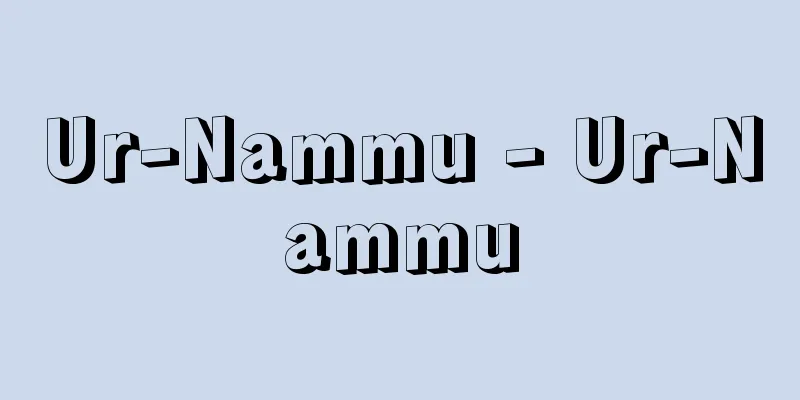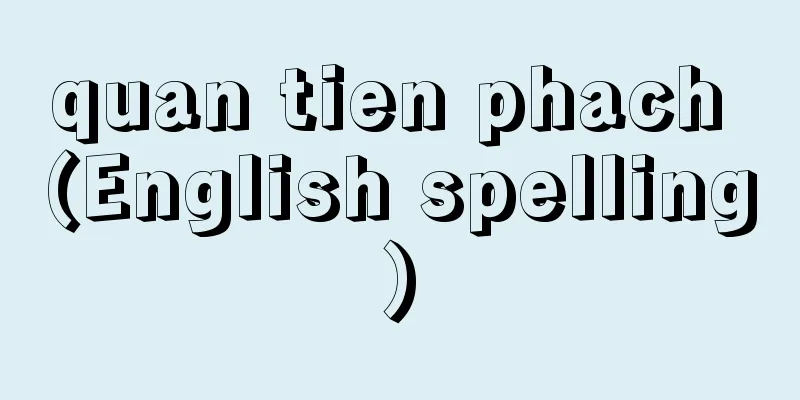Mother - Haha
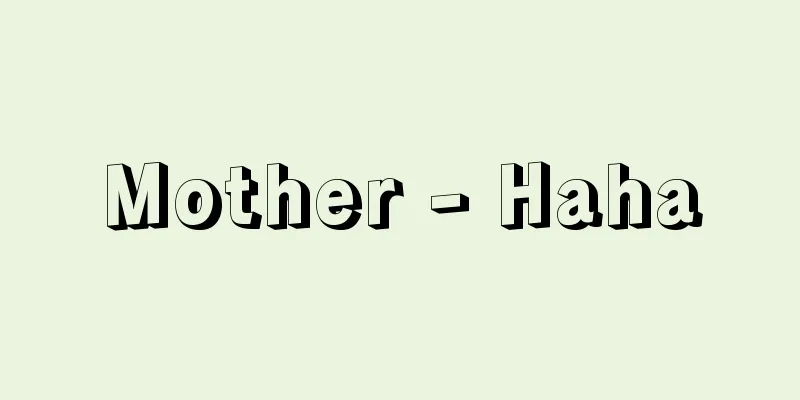
|
[1] 〘Noun〙 (Even in the era of "hawa") 1. The female parent. The mother who gave birth to and raised the child. A general term for biological mother, adoptive mother, and stepmother. Mother. Onnaoya. Meoya. *Shoku Nihongi - August 24, 1st year of Tenpyo (729) - Imperial decree: "During this time, the crown prince became the next in line to succeed the heavenly throne. As a result, his great-grandmother, Fujiwara no Lady , was designated empress." *The Tales of Ise (early 10th century) 10: "His father was a commoner, and his grandmother was Fujiwara." *Kohon Setsuwashu (around 1130) 5 and 6: "He was called to be my mother." *The Women of Apaato and Me (1928) from <Ryudoji Yu > 6: "My stepmother and sisters-in-law too." 2. The source of things, or people. ※Shoku Nihongi, 5th year of the Houki era (774), April, Friday, “That one who has attained the supreme wisdom of perfection is the mother of all Buddhas.”※Saikokorishihen (1870-71), translated by Nakamura Masanao. 5 “Poorness is indeed the mother of creativity.”[2] (Original title Mat') A full-length novel by Gorky. Published in English in 1906. The Russian edition was published the following year. It depicts the process by which a mother who has lived a life of ignorance and submission awakens to a consciousness of social change through her son who is passionate about the revolutionary movement, paving the way for socialist realism in fiction. [Glossary](1) It is said that the consonants of the “ha” row changed phonetically from p to Φ to h at the beginning of words and from p to Φ to w in the middle of words (Φ is a bilabial fricative, also written as F). According to this, "haha" should have gone from papa → ΦaΦa → Φawa → hawa, and in fact, the form hawa seems to have been widely used in the Middle Ages. It is impossible to confirm whether "haha" written in kana is pronounced haha or hawa, but since there are scattered examples of it being written as "hawa" from the beginning of the 12th century, such as in the example of (1)① in the Kohon Setsuwashu, it is likely that it was not uncommon to write "haha" and pronounce it as hawa, just as a river is written as "kaha" and pronounced as "kawa." Looking at Christian materials, the "Nippo Jisho" has both Fafa (haha) and Faua (hawa) in its headings, but in actual examples such as the "Amakusahon Heike," hawa is overwhelmingly more common. (2) There are several possible reasons why hawa, which was dominant until the beginning of the 17th century, disappeared and only the haha form came to be used as in modern times. (a) Analogy with other kinship terms, chichi, jiji, and baba, was used. That is, these kinship terms have characteristics such as disyllabic words, repetition of homophones, and pairing of clear and voiced sounds, so the form expected from baba is haha. (b) In the Edo period, words such as kaka (sama) and okasan gradually became common as words meaning mother in everyday colloquial language, and "haha" became a word that children learned by ear when they were young, but acquired as adults. (c) Even in the Edo period, "haha" was common when writing in kana, and this writing style influenced this. Omo [mother]Amo [mother](2) There is a theory that the use of "amoshishi" or "omochichi" in contrast to the central word "chichihaha" is a remnant of the ancient matriarchal system, since "mother" comes first. Hahahaha [mother]Source: The Selected Edition of the Japanese Language Dictionary About the Selected Edition of the Japanese Language Dictionary Information |
|
[1] 〘名〙 (「はわ」の時代も)① 親のうちの女の方。生んだり、育てたりしてくれた女親。実母・養母・継母の総称。母親。おんなおや。めおや。※続日本紀‐天平元年(729)八月二四日・宣命「此の間に、天つ位に、嗣坐(つぎます)べき次と為て皇太子(ひつぎのみこ)侍りつ。是に由りて其の婆婆(ハハ)と在(いま)す藤原夫人を皇后と定賜ふ」※伊勢物語(10C前)一〇「父はなほびとにて、ははなん藤原なりける」※古本説話集(1130頃か)五六「はわにとへとおほせらる」※アパアトの女たちと僕と(1928)〈龍胆寺雄〉六「義母(ハハ)も義姉(あね)たちも」② 物事を生み出すもととなるもの、また、人。※続日本紀‐宝亀五年(774)四月己卯「其摩訶般若波羅蜜者、諸仏之母也」※西国立志編(1870‐71)〈中村正直訳〉五「蓋し窮困は創造の母なり」[2] (原題Mat') 長編小説。ゴーリキー作。一九〇六年英文で発表。翌年ロシア語版刊。無知と忍従に生きてきた一人の母親が、革命運動に情熱を傾ける息子を通じて、みずからも社会変革の意識にめざめていく過程を描き、小説上の社会主義リアリズムへの道を開いた。[語誌](1)ハ行子音は、語頭ではp→Φ→h、語中ではp→Φ→wと音韻変化したとされる(Φは両唇摩擦音。Fとも書く)。これに従えば、「はは」は papa → ΦaΦa → Φawa → hawa となったはずで、実際、ハワの形が中世に広く行なわれたらしい。仮名で「はは」と書かれたものの読み方がハハなのかハワなのかは確かめようがないが、すでに一二世紀の初頭から(一)①の挙例「古本説話集」など、「はわ」と書かれた例が散見されるから、川のことを「かは」と書いてカワと読むごとく、「はは」と書いてハワと読むことも少なくなかったと考えられる。キリシタン資料を見ると、「日葡辞書」では Fafa(ハハ)と Faua(ハワ)の両形が見出しにあるが、「天草本平家」などにおける実際の用例ではハワの方が圧倒的に多い。 (2)一七世紀初頭までは優勢だったハワが滅んで、現代のようにハハの形のみが用いられるようになったのには、次のようないくつかの原因が考えられる。(イ)他の親族名称、チチ・ヂヂ・ババからの類推が働いた。すなわち、これらの親族名称は、二音節語、同音反復、清濁のペアをなす、といった特徴があるから、ババから期待される形はハハである。(ロ)江戸時代には、日常の口頭語で母を意味する語としては、カカ(サマ)・オッカサンなどが次第に一般的となり、「はは」は子供が小さいときに耳で覚える語ではなく、大人になってから習得する語になっていった。(ハ)江戸時代でも、仮名表記する際には「はは」が一般的であり、この表記の影響による。 おも【母】あも【母】(2)中央語「ちちはは」に対する「あもしし」あるいは「おもちち」は、母が先にくるところから、古代母系制の名残と見る説もある。 はわ はは【母】出典 精選版 日本国語大辞典精選版 日本国語大辞典について 情報 |
Recommend
Afternoon Dress
Daytime formal attire for women, mainly for the af...
Senzuka Iwahashi
Iwahashi, Wakayama City is a large group of appro...
Broadcast reception fee - housoujushinryo
This is a fee collected by the Japan Broadcasting ...
Mogolian - Mogolgo
It is a Mongolian language that exists in isolati...
Sant'Apollinare Nuovo (English spelling)
...The mosaics of the Arian Baptistery were made ...
Cartan, H.
…French mathematician. Born in a small village in...
hypokeimenōn (English spelling)
… [Entities and Attributes] One of the basic conc...
Battle of Uhud
…Muhammad, who initially adopted Jewish rituals s...
Pseudogeometry - Geometry
→Affine geometry Source : Heibonsha Encyclopedia A...
Hydrous oxide
...In a narrow sense, it refers to compounds with...
Sherif (English spelling) Ech-Cheliff
Formerly called El-Asnam (until 1981) and Orléansv...
Indus Valley Script
The script used by the Indus Valley Civilization....
Shirase Glacier
A glacier located about 100 km south of Showa Sta...
Ecumenism - ecumenism
The spirit of reuniting all the divided Christian...
Pujangga Baru (English spelling)
A literary magazine published in colonial Indonesi...



